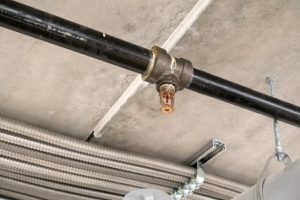The West Fertilizer Company in West, Texas operated out of a building that was originally constructed in 1961. The facility was expanded, piecemeal, over the next 52 years, but its underlying construction remained the same: a wood-framed building with asphalt shingles and plywood bins for storing fertilizer-grade ammonium nitrate (FGAN) and other bulk agricultural materials, such as seeds and zinc sulfate.

SimplyCreativePhotography / iStock / Getty Images Plus / Getty Images
Of course, we learned a lot about building construction and safe handling of FGAN between 1961 and 2013. Unfortunately for West Fertilizer Company, the building was “grandfathered” in as fire codes and building standards progressed, and the facility lacked a raft of safety features that could have reduced or prevented the fire and explosion that destroyed the facility and damaged nearby schools, homes, medical buildings, and a park.
How much did allowing the West Fertilizer facility to operate with outdated construction ultimately cost? Undoubtedly more than it would have cost to upgrade the facility. In order to help environment, heath, and safety professionals make the “business case” for the kinds of improvements that could have prevented the West Fertilizer explosion and other chemical catastrophes, the U.S. Chemical Safety and Hazard Investigation Board (CSB) has issued a report on the costs of four major catastrophes—and the measures that could have prevented them.
West Fertilizer: An Unsafe Facility
As of January 2016, insurance-related losses from the 2013 explosion of stored FGAN at the West Fertilizer Company in West, Texas had exceeded $230 million—exclusive of $16 million in federal disaster assistance. In addition, the town was fortunate that the incident occurred at 7:51 p.m. rather than 7:51 a.m., because the blast damaged three schools (two of which were later completely demolished), which happened to be empty at that time of day. As it was, 12 first responders and three members of the general public died as a result of the blast.
CSB’s investigation of the incident revealed that a lack of planning and emergency preparation on the part of multiple parties, including the site owner, local planning commission, and local emergency responders contributed to this catastrophe. In all likelihood, lives would have been saved and losses prevented if the site owner had implemented some “inherently safer strategies” for the storage and handling of FGAN. It would have cost considerably less than $230 million to:
- Upgrade storage facility construction. The massive explosion at West Fertilizer resulted from the storage of 40 to 60 tons of explosive FGAN in a single wood-framed building, in three bins constructed largely from plywood, in areas with exposed electrical wiring. In addition, the building was not ventilated in a way that would have reduced the risk of a catastrophic explosion. Bins constructed of noncombustible materials with explosionproof wiring and proper ventilation could have dramatically reduced the risk of an explosion. In addition, minimizing the quantity of FGAN stored in any single bin would reduce the risk.
- Reduce the chances of contamination. The FGAN at the facility was not handled in a way that protected it from contamination by other substances that increased the risk of an explosion, which can include ignitable liquids, finely divided metals or organic materials, chloride salts, carbons, acids, fibers, and sulfides. Simple changes to the handling and storage of the FGAN could have drastically reduced the contamination of the substance.
- Install sprinklers. The West Fertilizer facility was built from combustible materials, and did not have sprinklers. Sprinkler systems can stop a fire before it becomes a catastrophe.
If you’re struggling to justify the cost of a facilities upgrade at a site with the potential for a catastrophic chemical event, perhaps West Fertilizer can help you make the business case for the investment.
Tomorrow we’ll look at some more costly catastrophes that could have been prevented by timely—and relatively inexpensive—equipment upgrades.
